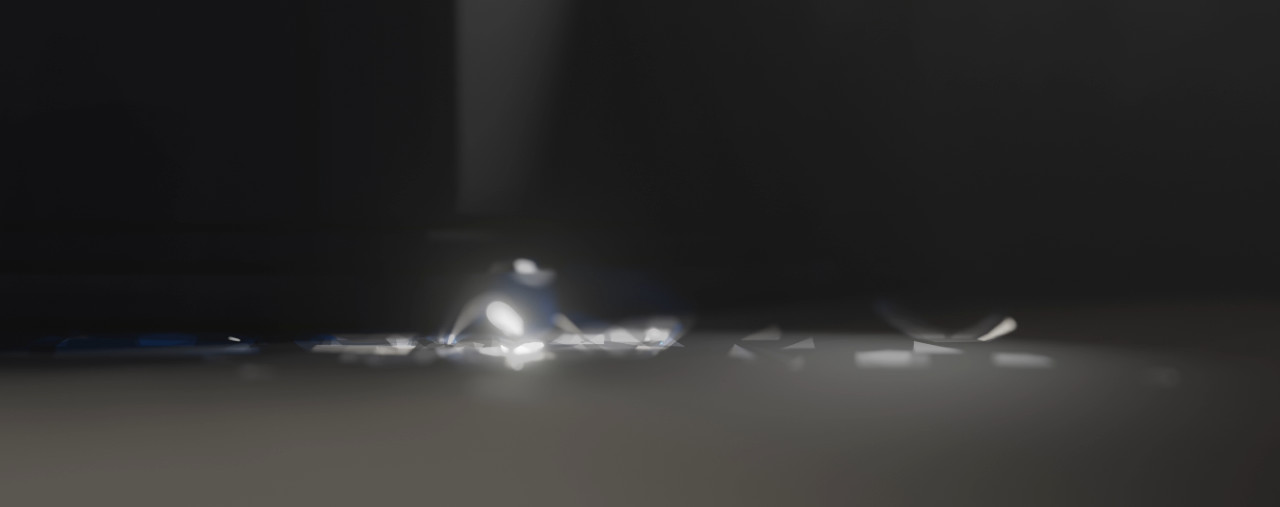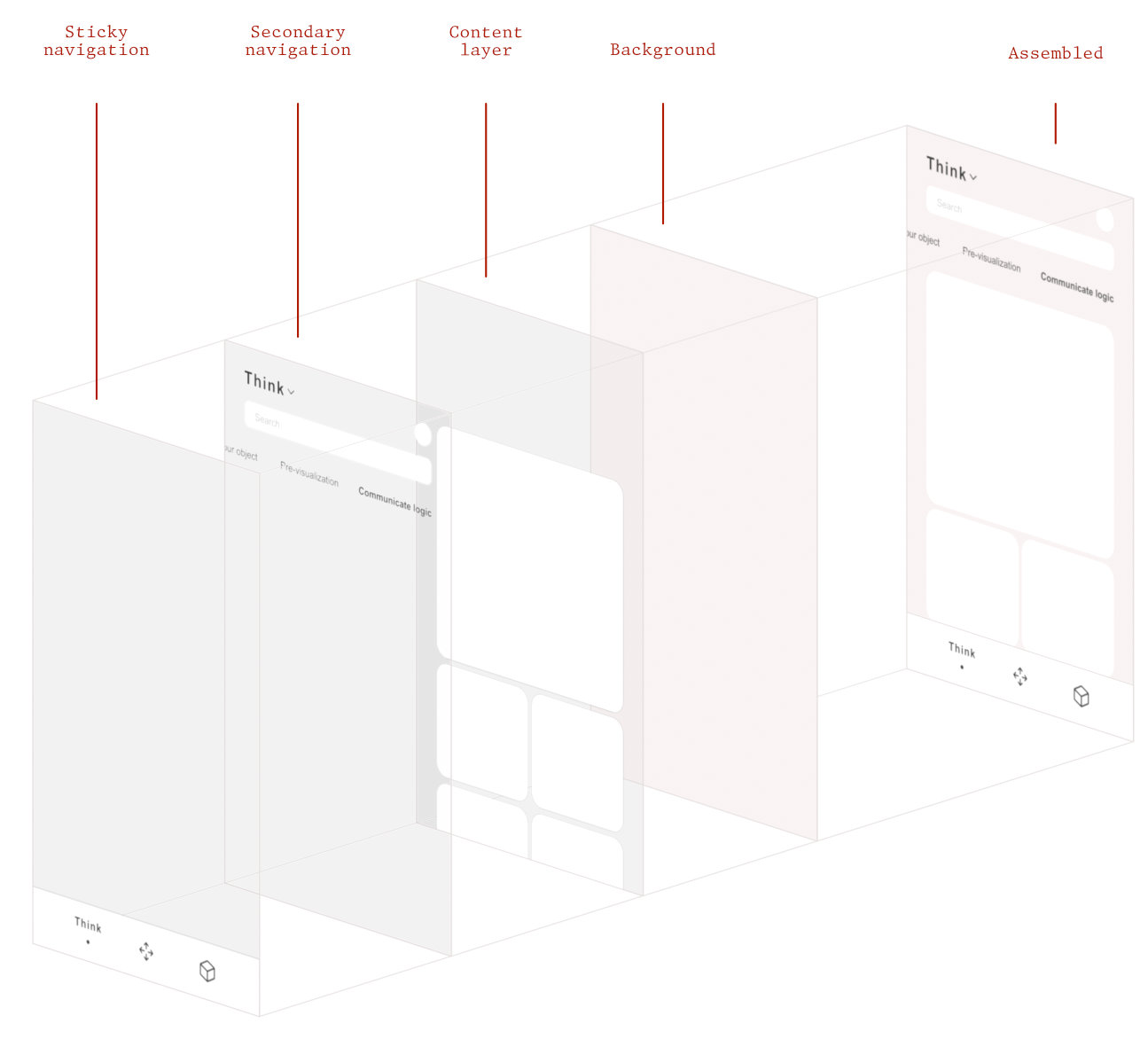How to think in 3D
| 3D | Graphic design |
|---|---|
| Complexity | Simplicity |
| Realism | Abstraction |
| Perspective | Grids |
| Reuse | Uniquity |
| … | … |
At first glance, 3D may seem in opposition to graphic design. It may seem impossible to marry the ideals from one to the other. But let’s try. Let’s see if interesting things happen in the intersections.

Photography was impractical before the digital camera. We couldn’t see our pictures until they’d been developed, often days after the shoot. So, we censored our more daring ideas. Let’s not do anything too crazy. Let’s not waste film.
It was hard to film for a day straight. It was hard to shoot long-exposure. It was hard to shoot in cramped spaces and from the air. So we didn’t. The digital camera allows us to consider these ideas. In the same way, 3D can expand our thinking. Let’s consider some new ideas…
3D in logo design
Complex shapes
Many logos imply a 3D shape. They can often look a little off. Maybe that’s because the designer didn’t quite understand the shape she was drawing. Who can blame her? It’s hard enough to think about all other aspects of logo design (balance, negative space, curvature) without also simulating an extra dimension. Sometimes it can help to see it in front of you.
What do three interlocking cubes look like?

How does an 'A' look when distorted through lenses?

How would lines twist around this 'p' shape?

3D in packaging design
Seeing your object
If you are flying a plane in fog, the cockpit window is useless. You are relying on your instrument panel. Instrument flying is hard to learn and even harder to enjoy, and it means you are allowed to fly only pre-defined routes. Pilots call it being in the soup.
If you are designing packaging on a flat canvas, you are instrument flying. When you can’t see the context for your design, you’re in the soup.

Not what your audience is seeing.
I was working with designers on a shrinkwrap recently. The shrinkwrap would be mostly transparent, and we all knew that would make it hard to read any text printed on it. I quickly simulated the shrinkwrap. With that we could make informed decisions about legibility.


The designers also wanted to see how pink pigment would look when stretched on the shrinkwrap. Their idea was to have parts of the plastic transparent and parts opaque. In ten minutes we could see exactly where the pigment would be opaque and where it would be stretched thin.
Sometimes you’re pretty sure your design will work. “This type will work even on a transparent bottle,” you say. Wouldn’t it be nice to know it for sure? Why not try it opaque too, just to see the alternatives with your own eyes.


When we design for the real world, it takes a lot of experience to imagine how the finished product will look. We’re instrument flying. To make sure the design will work, we play it safe. But it comes at a cost: we don’t experiment. That’s the problem with being in the soup. We’re not free to play.
Film productions
Pre-visualization






Film productions almost always “pre-vis” their shoots. It has become common to do it in 3D. There’s no reason why smaller productions shouldn't pre-vis. It saves a lot of time and frustrations on set.
- Block out the location in 3D.
Lay out your props. A door here, a window there. If you have the real location, 3D-scan it with your phone (it’s possible!). You’ll have a copy of reality. - Play with angles and lights.
Make informed decisions about camera and lights. “Oh, if there’s a tree there, then he will fall in the shadow!” - Get feedback and adjust.
Get everyone’s input. Move the camera, re-pose the character, re-color the props.
Design manuals
Communicate logic
When we’re talking about design, we’re not truly conveying the visuals on our mind. It’s useful to illustrate your thinking. But flat images only go so far. In 3D, we get everyone on-board with the logic of our design system.

The bottom line
How to think in 3D
When I was a child, I had all sorts of great ideas. I fantasized about sewing a special three-piece suit, building a private temple, and writing a new encyclopedia. As I grew, I the grandiose ideas stopped coming. Except, I understand now, they didn’t stop coming. I just started censoring them.
Little Robin didn’t understand the work required. He was free to indulge in the most bombastic of ideas because he deluded himself that he might realize them sometime. Older me has no such illusions. My ideas for fashion, architecture, and literature don’t survive the filter.
That’s a good thing. Our minds filter out ideas that don’t matter so we have room for what matters. So should we learn to indulge in ideas that don’t matter? No. I’m arguing that we should expand our skills. Make the idea matter by mastering the discipline. Or work with someone who does.
I no longer censor my 3D ideas. I get them when I decorate, write, and bake. I find them useful in most aspects of life. And I expand my competency every day. I’m back on track for narcissistic grandiosity.